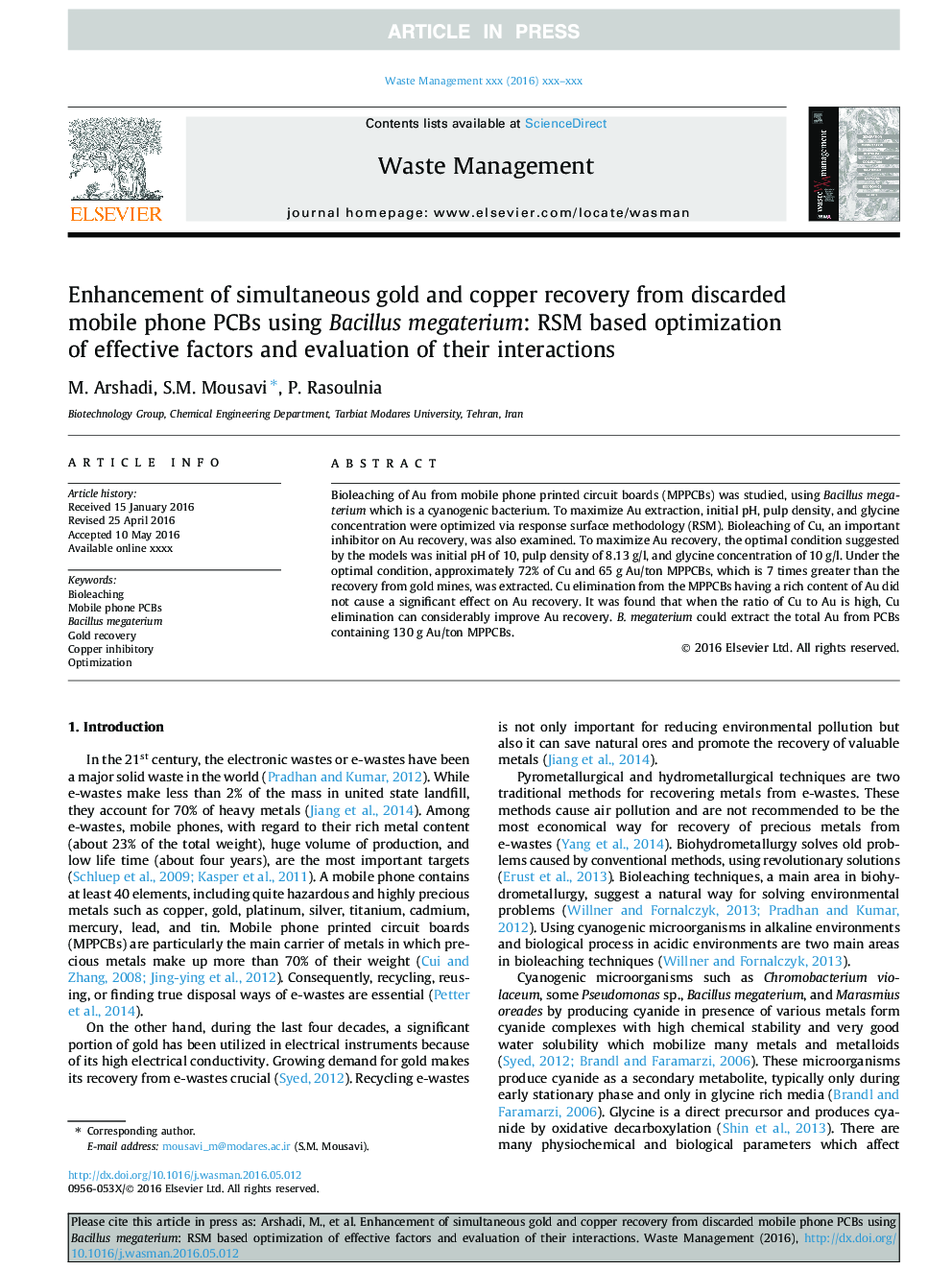| Article ID | Journal | Published Year | Pages | File Type |
|---|---|---|---|---|
| 5757165 | Waste Management | 2016 | 10 Pages |
Abstract
Bioleaching of Au from mobile phone printed circuit boards (MPPCBs) was studied, using Bacillus megaterium which is a cyanogenic bacterium. To maximize Au extraction, initial pH, pulp density, and glycine concentration were optimized via response surface methodology (RSM). Bioleaching of Cu, an important inhibitor on Au recovery, was also examined. To maximize Au recovery, the optimal condition suggested by the models was initial pH of 10, pulp density of 8.13Â g/l, and glycine concentration of 10Â g/l. Under the optimal condition, approximately 72% of Cu and 65Â g Au/ton MPPCBs, which is 7 times greater than the recovery from gold mines, was extracted. Cu elimination from the MPPCBs having a rich content of Au did not cause a significant effect on Au recovery. It was found that when the ratio of Cu to Au is high, Cu elimination can considerably improve Au recovery. B. megaterium could extract the total Au from PCBs containing 130Â g Au/ton MPPCBs.
Related Topics
Physical Sciences and Engineering
Earth and Planetary Sciences
Geotechnical Engineering and Engineering Geology
Authors
M. Arshadi, S.M. Mousavi, P. Rasoulnia,
